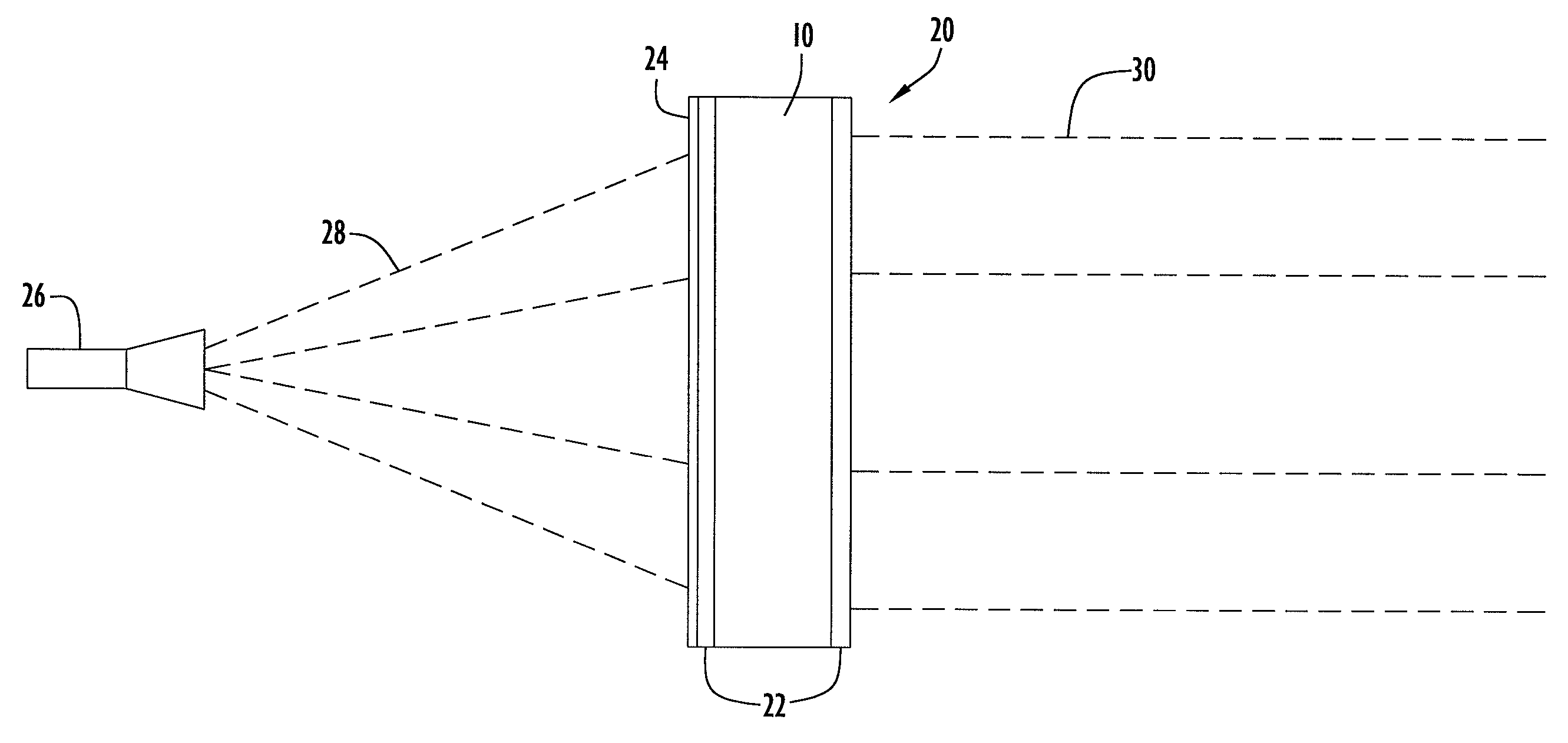Radio frequency lens and method of suppressing side-lobes
a radio frequency lens and sidelobe technology, applied in the direction of antennas, electrical equipment, etc., can solve problems such as creating errors within the wavefront, and achieve the effect of reducing the amount of energy
- Summary
- Abstract
- Description
- Claims
- Application Information
AI Technical Summary
Benefits of technology
Problems solved by technology
Method used
Image
Examples
Embodiment Construction
[0018]The present invention embodiments pertain to a radio frequency (RF) lens that includes a photonic crystal structure and suppresses side-lobe features. An exemplary lens according to an embodiment of the present invention being illuminated by an RF signal source or feed horn is illustrated in FIG. 1. Specifically, the configuration includes a signal source 26 and an RF lens 20 according to an embodiment of the present invention. Signal source 26 may be implemented by any conventional or other signal source (e.g., feed horn, antenna, etc.) and preferably provides an RF signal or beam 28. Lens 20 receives the RF beam from signal source 26 and refracts the beam to produce a collimated RF beam 30. Lens 20 may be utilized for any suitable RF transmission and / or reception system.
[0019]Lens 20 includes a lens portion or layer 10, a plurality of impedance matching layers 22 and an absorption or apodizing layer or mask 24. Lens layer 10 is disposed between and attached to impedance matc...
PUM
 Login to View More
Login to View More Abstract
Description
Claims
Application Information
 Login to View More
Login to View More - R&D
- Intellectual Property
- Life Sciences
- Materials
- Tech Scout
- Unparalleled Data Quality
- Higher Quality Content
- 60% Fewer Hallucinations
Browse by: Latest US Patents, China's latest patents, Technical Efficacy Thesaurus, Application Domain, Technology Topic, Popular Technical Reports.
© 2025 PatSnap. All rights reserved.Legal|Privacy policy|Modern Slavery Act Transparency Statement|Sitemap|About US| Contact US: help@patsnap.com



